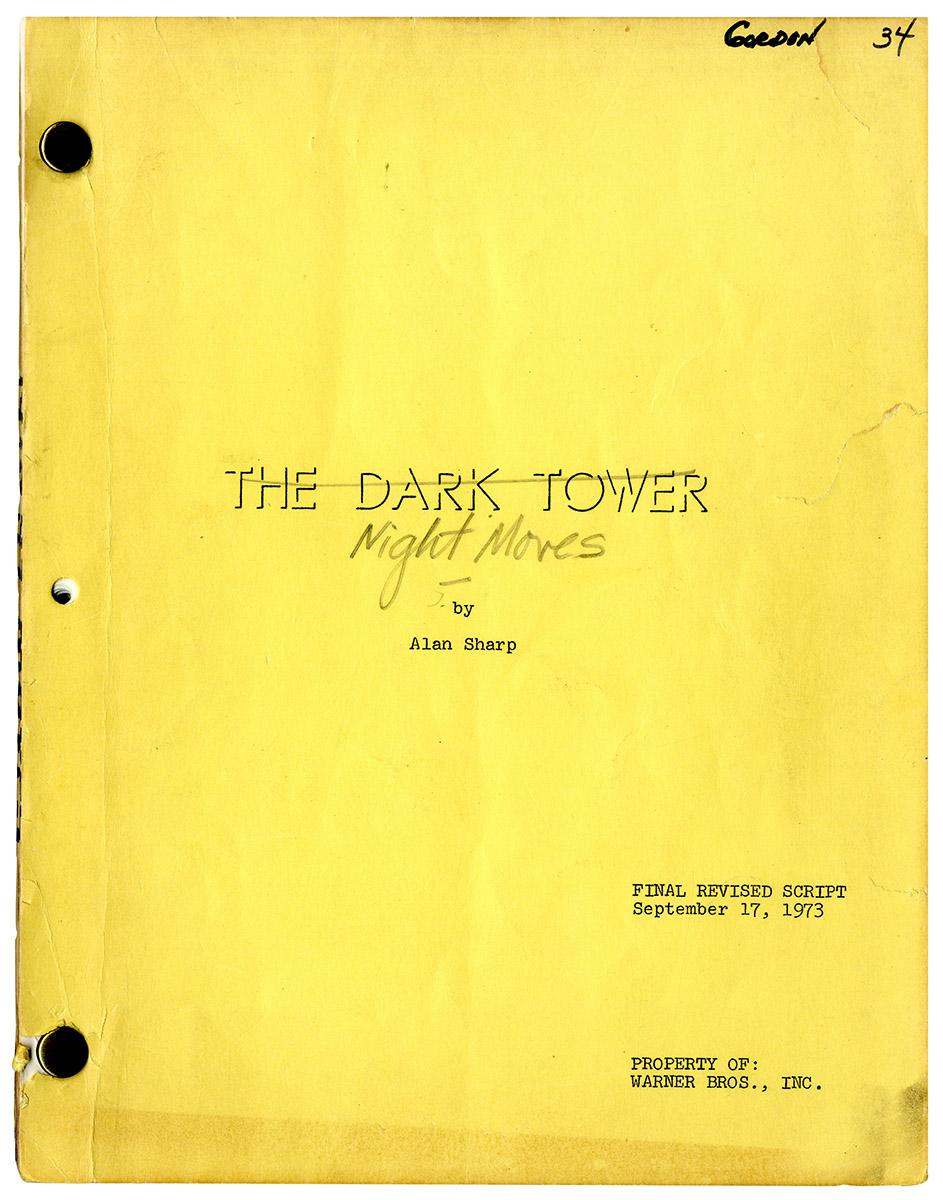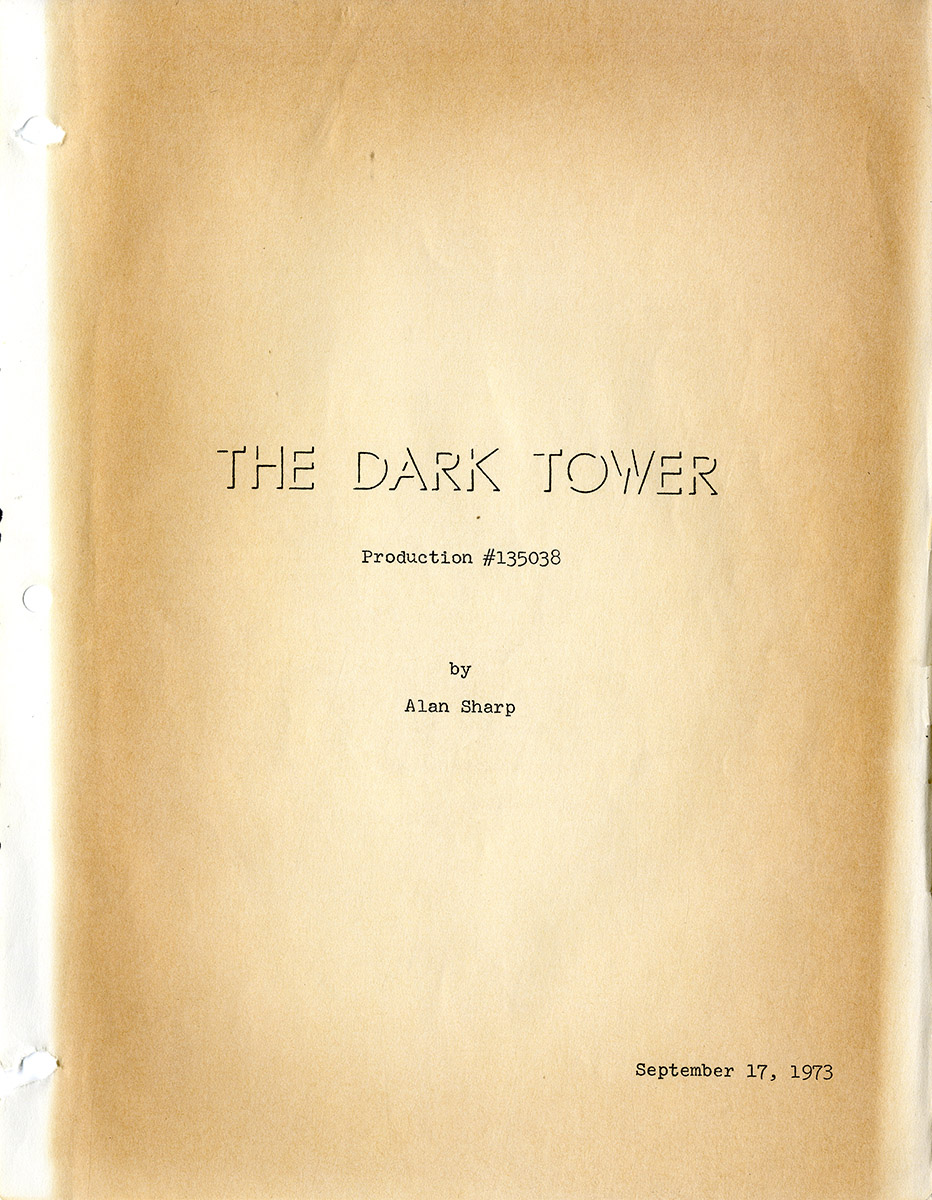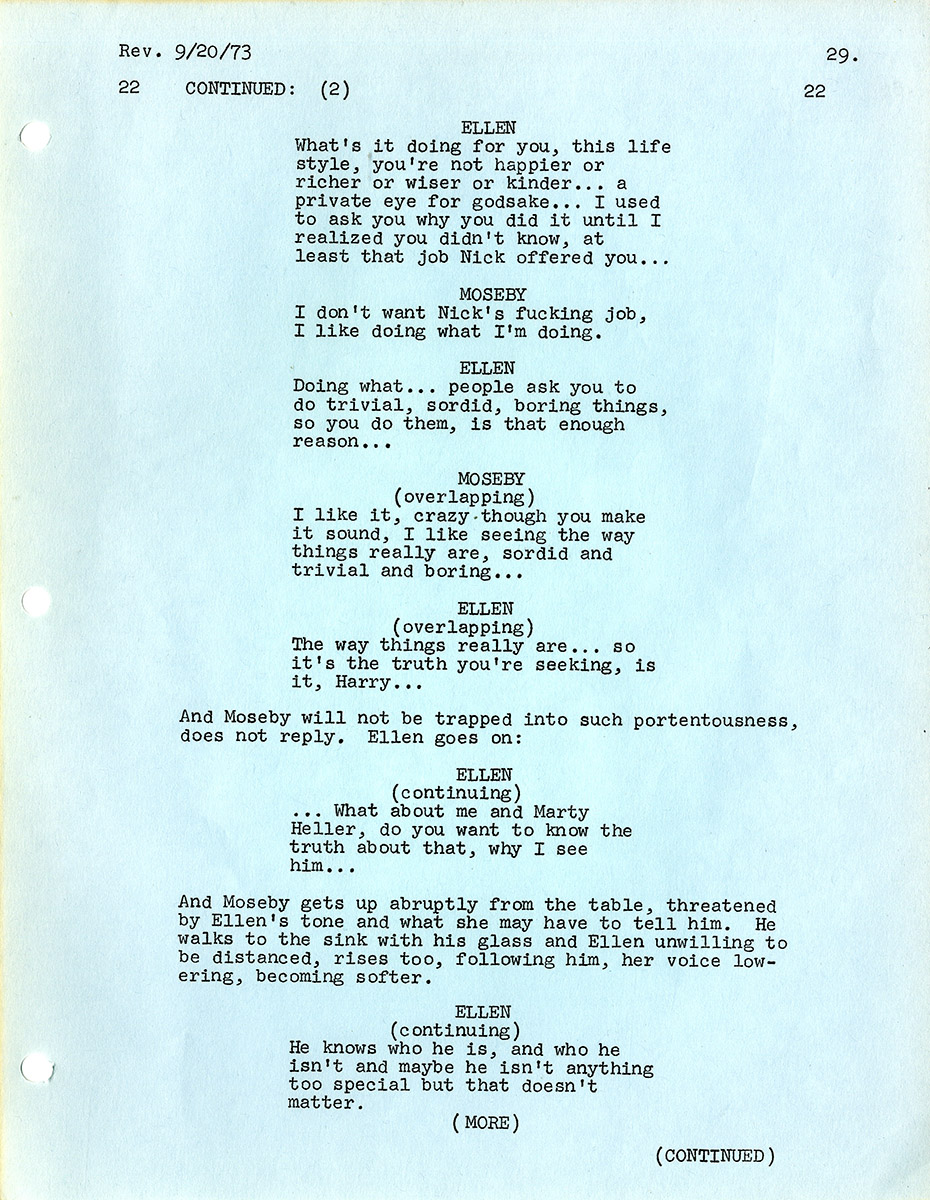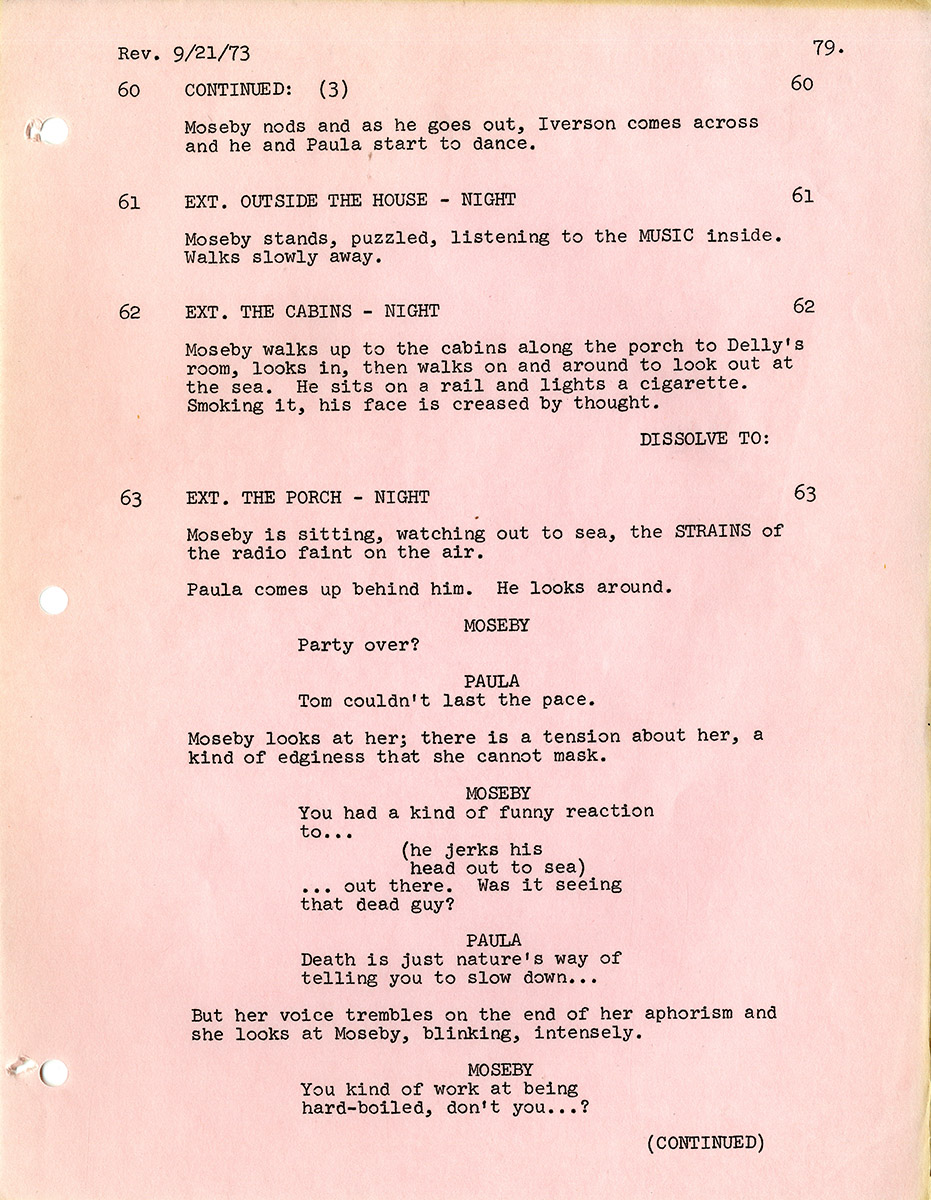Arthur Penn (director) NIGHT MOVES [working title: THE DARK TOWER] (Sep 17, 1973) Final revised film script
[Burbank, CA]: Warner Brothers, 1973. Vintage original film screenplay, brad bound, printed wrappers, mimeograph, with many pages of revisions on colored paper, 11 x 8 1/2″ (28 x 22 cm.), 126 pp. Script (under working title The Dark Tower, 1973. Script internally near fine, with some toning to a few initial leaves. Wrappers very good+, with the lower brad coming loose, and a few short closed tears and a light vertical crease to front wrapper.
Released in 1975, Arthur Penn’s Night Moves is now considered one of the major private eye neo-noirs of the 1970s, a trilogy that includes Robert Altman’s The Long Goodbye (1973) and Roman Polanski’s Chinatown (1974). What Night Moves shares with The Long Goodbye and Chinatown is the sense of society in disintegration. Night Moves could also be considered part of another trilogy, one of three classic 1970s neo-noirs that feature Gene Hackman as a protagonist, his out-of-his-depth private investigator in Night Moves having more than a little in common with his ethically challenged cop in The French Connection (William Friedkin, 1971), and his puzzled, morally confused surveillance expert in The Conversation (Francis Ford Coppola, 1974).
The original screenplay of Night Moves was authored by Alan Sharp (1934-2013), a Scottish-born novelist and screenwriter known for his fresh takes on established film genres. Concerning Night Moves‘ pivotal seduction scene, film critic David N. Meyer wrote, “These delicious, poisonous moments — these cookies full of arsenic — come courtesy of Alan Sharp’s venomous, entrapping, perfectly circular screenplay. It’s hard not to regard him — rather than Penn — as the engine of Night Moves‘ enduring power. Sharp had an unbroken forty-year career writing features and television.”
The name of Hackman’s character is Harry Moseby. Sharp’s screenplay begins with Moseby on a routine assignment, confronting an elderly woman who has threatened to poison her neighbor’s dog. The movie, on the other hand, starts with Moseby arriving at his office where he listens to a telephone message that immediately sets up the story’s principal plotline, a former film actress who wants to hire Moseby to locate her missing teenage daughter.
The differences between Sharp’s “Final Revised Script” and Penn’s completed movie are some minor revisions and some major trims. Director Penn and his frequently Oscar-nominated editor, Dede Allen (Bonnie & Clyde, Reds), cut Sharp’s already tight screenplay to its bare essentials. Regardless, the film retains most of the screenwriter’s best one-liners, as when former football player Moseby is watching a game on television and his wife asks him who’s winning, and Moseby replies, “Nobody. One side’s losing slower than the other.” Even classic film noirs like The Big Sleep (1946) are known for their narrative ambiguity, but Night Moves takes its existential uncertainty to an extreme. Though most of the principal characters die before the story ends, it is never entirely clear which characters die as a result of accidents and which were homicides. Moseby has his own theories, of course, but he is so wrong about so many things, we don’t know who or what to believe.
The screenplay’s ending is even more ambiguous than the movie’s. Sharp doesn’t tell us who is flying the seaplane that shoots Moseby and kills femme fatale Paula — though it would have to be stuntman Ziegler, the only still-living member of the conspiracy who would have the skill to fly such a plane. Conspicuously missing from the screenplay is the movie’s unforgettable final shot, an overhead view of the boat carrying the wounded Moseby circling endlessly in the water, a quintessentially neo-noir image of meaningless and futility.
Collation: [title], [1], 2-4; 5 (light blue, “DARK TOWERS” – Rev. 9/17/73), 6 (light blue, Rev. 9/17/73), 7, 8 (light blue, “GORDON” in blue ink, “THE DARK TOWER” – REV. 9/20/73), 8A (light blue, REv. 9/20/73), 9-14, 15 (light blue, Rev. 9/20/73), 16 (pink, Rev. 9/20/73), 17-26, 27-29 (all: light blue, Rev. 9/20/73), 29A (light blue, Rev. 9/20/73), 30-34, 35-36 (all: light blue, Rev. 9/20/73), 37-41, 42 (pink, Rev. 9/19/73), 43, 44 (light blue, Rev. 9/20/73), 45 (pink, Rev. 9/20/73), 46, 47-49 (all: light blue, Rev. 9/19/73), 50 (pink, Rev. 9/20/73), 51 (light blue, ink notation, Rev. 9/19/73), 53 (pink, THE DARK TOWER – Rev. 9/19/73), 54-55, 56 (pink, Rev. 9/21/73), 57-58 (all: light blue, Rev. 9/21/73), 58A (light blue, Rev. 9/21/73), 59 (pink, Rev. 9/21/73), 60-63, 64 (light blue, Rev. 9/21/73), 65 (pink, Rev. 9/21/73), 66-67, 68-69 (all: light blue, Rev. 9/21/73), 69A (light blue, Rev. 9/21/73), 70-71 (all: light blue, Rev. 9/20/73), 72 (pink, Rev. 9/21/73), 73-74, 75-78 (all: light blue, Rev. 9/19/73), 79 (pink, Rev. 9/21/73), 80 (yellow, Rev. 9/21/73), 81 (light blue, Rev. 9/20/73), 82-83, 84-85 (all: light blue, Rev. 9/19/73), 85A (light blue, Rev. 9/19/73), 86, 87 (light blue, Rev. 9/19/73), 87 A (light blue, Rev. 9/19/73), 88-89, 90 (light blue, Rev. 9/17/73), 91 (pink, Rev. 9/20/73), 91A/92 (one leaf, pink, Rev. 9/20/73), 93-94 (all: light blue, Rev. 9/20/73), 94A-94B (all: light blue, Rev. 9/20/73), 95 (light blue, Rev. 9/17/73), 95A (pink, Rev. 9/23/73), 96/96A (one leaf, pink, Rev. 9/23/73), 97 (green, Rev. 9/23/73), 98 (light blue, ink notation, Rev. 9/23/73), 101-102 (all: light blue, ink notation, Rev. 9/23/73), 103 (pink, ink notation, Rev. 9/23/73), 104 (light blue, “DARK TOWER” – Rev. 9/25/73), 105 (light blue, “THE DARK TOWER” – Rev. 9/25/73), 106/106A (one leaf, light blue, “THE DARK TOWER” – Rev. 9/25/73), 107-110, 111 (light blue, “THE DARK TOWER” – Rev. 9/25/73), 112, 113 (light blue, Rev. 9/23/73), 114-115 (all: light blue, Rev. 9/20/73), 116-119.
In stock
Related products
-
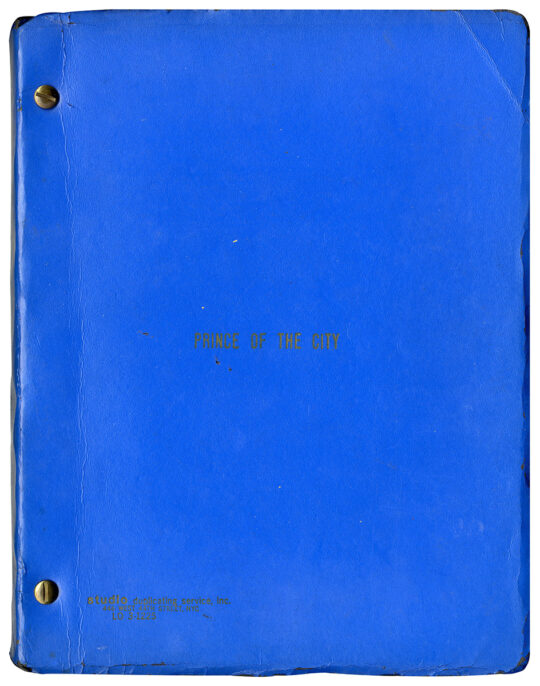
Sidney Lumet (director) PRINCE OF THE CITY (Jan 1980) Final Draft film script
$950.00 Add to cart -
![CHINATOWN [ca. 1973] Jack Nicholson's copy of early draft film script by Robert Towne](https://www.walterfilm.com/wp-content/uploads/2024/06/ChinatownSCR_a-540x693.jpg)
CHINATOWN [ca. 1973] Jack Nicholson’s copy of early draft film script by Robert Towne
$18,500.00 Add to cart -
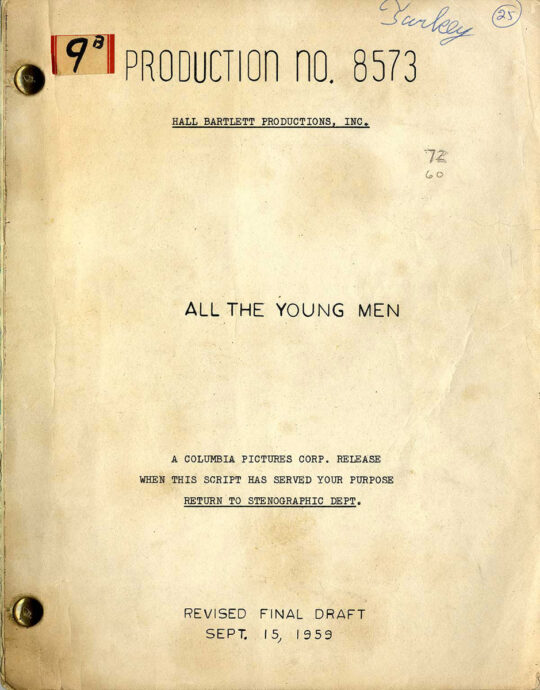
ALL THE YOUNG MEN (Sep 15, 1959) Revised Final Draft script by Hall Bartlett
$450.00 Add to cart -
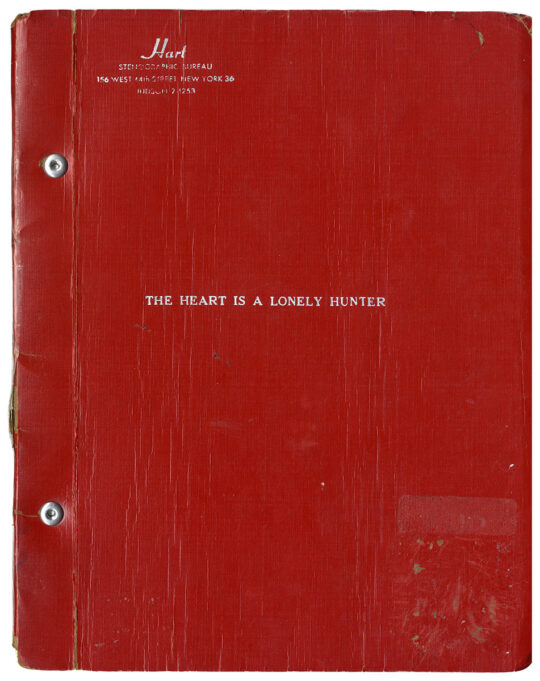
Carson McCullers (source) THE HEART IS A LONELY HUNTER (Aug 26, 1963) Film script by Thomas C. Ryan
$1,000.00 Add to cart

